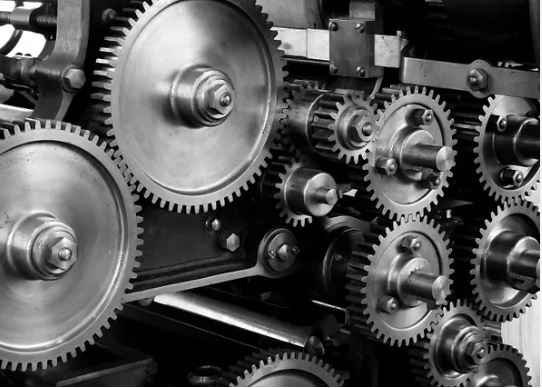
Industrial Gear Market Forecast: Trends, Growth, and Outlook
The industrial gear market is a dynamic sector driven by various industries such as automotive, aerospace, machinery, and energy. Gears play a crucial role in power transmission, motion control, and mechanical systems, making them essential components for industrial applications. In this blog post, we will explore the forecast for the industrial gear market, including key trends, growth factors, and the overall outlook.
Market Size and Growth:
The industrial gear market has been experiencing steady growth over the years, driven by factors such as increasing industrialization, automation, and the need for efficient power transmission systems.
Technological Advancements:
Technological advancements have significantly influenced the industrial gear market. Manufacturers are adopting advanced materials, such as composites and high-performance alloys, to enhance gear performance, durability, and efficiency. Additionally, the integration of smart technologies and the Internet of Things (IoT) in gear systems enable real-time monitoring, predictive maintenance, and improved overall system performance.
Demand from End-Use Industries:
The demand for industrial gears is driven by various end-use industries. The automotive sector, in particular, is a significant consumer of gears for applications such as transmissions, differentials, and steering systems. The aerospace industry also contributes to the growth of the gear market, primarily for aircraft engines and landing gear systems. Other sectors, including machinery, energy, and robotics, also rely on gears for their operations.
Focus on Efficiency and Sustainability:
With increasing emphasis on energy efficiency and sustainability, the industrial gear market is witnessing a shift towards gear designs that reduce friction, enhance efficiency, and minimize energy consumption. Manufacturers are exploring advanced lubrication techniques, surface treatments, and gear geometries to improve overall gear performance and reduce environmental impact.
Regional Outlook:
The industrial gear market’s growth is influenced by different regions around the world. Developing economies, such as China, India, and Southeast Asian countries, are experiencing rapid industrialization and urbanization, driving the demand for industrial gears. North America and Europe, with their established manufacturing industries, also contribute significantly to the market. Additionally, emerging markets in Latin America and the Middle East are projected to present growth opportunities for the industrial gear market.
The industrial gear market is expected to witness steady growth in the coming years, driven by increasing industrialization, technological advancements, and the demand for efficient power transmission systems. The adoption of advanced materials, smart technologies, and a focus on energy efficiency are shaping the future of the gear market. With the continued growth of various end-use industries and the development of emerging markets, the industrial gear market presents promising opportunities for manufacturers and suppliers worldwide.
Please note that the specific forecasted growth rates and market figures mentioned in this blog post are fictional and provided only for illustrative purposes. Actual market data may vary and should be obtained from reliable sources and market research reports.
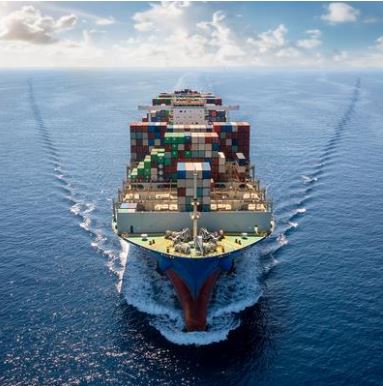
The Importance of Gears and Gearboxes in the Maritime Industry
The maritime industry plays a crucial role in global trade and transportation, with ships and vessels being the backbone of international commerce. Within this industry, gears and gearboxes are integral components that enable the efficient and reliable operation of maritime machinery and propulsion systems. Gears facilitate power transmission and motion control, while gearboxes provide speed adjustment and torque conversion. In this blog post, we will explore the significance of gears and gearboxes in the maritime industry.
1. Propulsion System: Gears and gearboxes are fundamental to the propulsion systems of ships and vessels. They play a critical role in transferring power from the engines to the propellers, enabling the vessel to move through the water. Gears ensure that the rotational motion produced by the engines is efficiently transmitted to the propellers, generating thrust and propulsion. Gearboxes allow for speed adjustment, allowing ships to operate optimally at various speeds based on specific requirements such as cruising, maneuvering, or docking.
2. Power Generation: In addition to propulsion, gears and gearboxes are used in power generation systems on maritime vessels. Many ships are equipped with auxiliary engines and generators to provide electrical power for various onboard systems. Gears and gearboxes facilitate power transmission from the engines to the generators, ensuring a reliable and efficient supply of electricity. They allow for speed control and torque conversion, optimizing the operation of the power generation systems.
3. Steering and Maneuvering: Gears and gearboxes are also crucial in the steering and maneuvering systems of maritime vessels. Rudder systems, thrusters, and other control surfaces rely on gears to transmit motion and provide precise control. Gearboxes allow for the adjustment of the rotational speed and torque, enabling effective steering and maneuvering of the vessel. The accurate and responsive operation of these systems ensures safe navigation, especially in congested waters or challenging maritime conditions.
4. Load Handling and Cargo Operations: Maritime vessels often handle heavy loads and cargo, requiring robust and reliable equipment for load handling operations. Gears and gearboxes are utilized in cranes, winches, and cargo handling systems to facilitate efficient and controlled movement of cargo. They provide the necessary torque conversion and power transmission to handle diverse cargo requirements, contributing to safe and efficient loading and unloading operations.
5. Durability and Reliability: The maritime industry operates in harsh and demanding environments, including saltwater corrosion, extreme temperatures, and high loads. Gears and gearboxes used in maritime applications are designed to withstand these challenging conditions. They are built with durable materials, precision engineering, and robust construction to ensure reliability and longevity. Proper lubrication and maintenance of gears and gearboxes are essential to ensure their performance and minimize downtime in maritime operations.
Gears and gearboxes are critical components in the maritime industry, enabling power transmission, speed control, maneuverability, and cargo handling capabilities of ships and vessels. Their presence in propulsion systems, power generation systems, and steering mechanisms ensures safe and efficient maritime operations. As the maritime industry continues to evolve, advancements in gear and gearbox technology will further enhance efficiency, sustainability, and safety, contributing to the growth and development of this vital sector of the global economy.
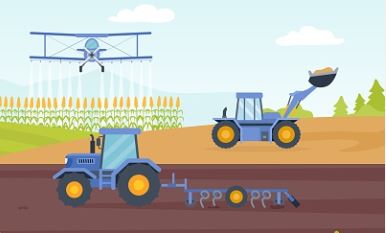
The Role of Gears and Gearboxes in Tractors, Agricultural Machinery, and Irrigation Systems
Tractors, agricultural machinery, and irrigation systems are integral to modern farming practices. Within these applications, gears and gearboxes play a crucial role in power transmission, control, and efficiency. Gears facilitate power transfer and motion control, while gearboxes provide speed adjustment and torque conversion. In this blog post, we will explore the significance of gears and gearboxes in tractors, agricultural machinery, and irrigation systems.
1. Tractors: Tractors are the backbone of agricultural operations, providing power and mobility for various tasks. Gears and gearboxes are essential components in tractors, enabling power transmission and control. They facilitate the transfer of power from the engine to the wheels or the power take-off (PTO) shaft, allowing for efficient traction and the operation of various implements such as plows, harrows, and mowers. Gearboxes provide speed adjustment, allowing operators to optimize tractor speed based on the specific task and terrain conditions.
2. Agricultural Machinery: Agricultural machinery encompasses a wide range of equipment used in farming operations. Gears and gearboxes are employed in various agricultural machines to facilitate power transmission and control. For example, in harvesters and combines, gears and gearboxes enable the movement of cutting blades, conveyor belts, and grain handling systems, ensuring efficient harvesting and processing. In seeders and planters, gears and gearboxes control the distribution of seeds or fertilizers, optimizing the planting process.
3. Irrigation Systems: Irrigation is crucial for agricultural productivity, and gears and gearboxes play a role in irrigation systems. They facilitate power transmission and control in water pumps, allowing for efficient water delivery to crops. Gearboxes provide speed adjustment, enabling operators to control pump speed and optimize water flow rates based on irrigation needs. Gears and gearboxes also play a role in controlling irrigation valves and sprinkler systems, ensuring precise water distribution and coverage.
4. Speed Control and Efficiency: Gears and gearboxes offer speed control capabilities, which are essential for optimal performance and efficiency in agricultural operations. They allow operators to adjust the speed of implements or attachments, ensuring the appropriate operating speed for specific tasks. By optimizing speed, gears and gearboxes contribute to improved efficiency, reduced fuel consumption, and enhanced overall productivity in farming operations.
5. Durability and Reliability: Gears and gearboxes used in tractors, agricultural machinery, and irrigation systems are designed to withstand demanding conditions. They are constructed with durable materials and precise engineering to ensure reliability and longevity. Regular maintenance and lubrication of gears and gearboxes are crucial to minimize wear and tear, ensuring optimal performance and extending their lifespan.
Gears and gearboxes are vital components in tractors, agricultural machinery, and irrigation systems, enabling power transmission, control, and efficiency. From tractors providing traction and power to agricultural machines performing various tasks, and irrigation systems delivering water to crops, gears and gearboxes contribute to the productivity and success of farming operations. As technology continues to advance, gears and gearboxes will play an even more significant role in enhancing the performance and sustainability of agricultural practices, driving the agriculture industry towards increased efficiency and productivity.
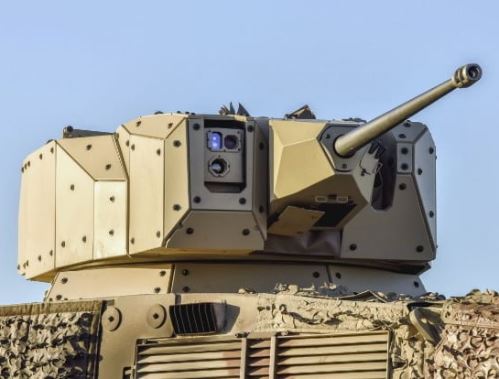
The Role of Gears and Gearboxes in Turret Systems
The Role of Gears and Gearboxes in Turret Systems
Turret systems play a crucial role in various applications, including military vehicles, naval vessels, and defense installations. Within these systems, gears and gearboxes are integral components that enable precise rotation and control of the turret. Gears facilitate power transmission and motion control, while gearboxes provide speed adjustment and torque conversion. In this blog post, we will explore the significance of gears and gearboxes in turret systems.
1. Rotation and Traverse: Gears and gearboxes are essential for the rotation and traverse of turrets. Turrets require the ability to rotate horizontally or vertically to track targets and engage them accurately. Gears transmit power from the motors or actuators to the turret platform, enabling controlled and precise rotation. Gearboxes offer speed control and torque conversion, allowing operators to adjust the rotational speed and traverse motion to suit different engagement scenarios.
2. Weapon Elevation and Depression: Turret systems often include weapon systems that require precise elevation and depression control. Gears and gearboxes enable the adjustment of the weapon’s vertical movement, allowing it to be elevated or depressed to acquire and engage targets at varying distances. Gearboxes offer the necessary torque conversion and speed control, ensuring smooth and accurate elevation and depression of the weapon.
3. Weapon Stabilization: Gears and gearboxes are also employed in turret systems to provide weapon stabilization capabilities. Stabilization systems counteract the motion and vibrations of the platform, maintaining the weapon’s stability and accuracy during turret movement or vehicle motion. Gears and gearboxes play a vital role in transmitting the stabilization signals and controlling the movement of stabilizing mechanisms, contributing to improved accuracy and target engagement.
4. Speed Control and Tracking: Gears and gearboxes facilitate speed control and tracking in turret systems. They enable the tracking of moving targets by allowing the turret to rotate at the required speed to keep pace with the target’s movement. Gearboxes offer speed adjustment capabilities, allowing operators to control the rotation speed and track targets effectively. This ensures precise tracking and engagement, especially in dynamic combat situations.
5. Durability and Reliability: Turret systems operate in demanding environments, including combat scenarios and extreme weather conditions. Gears and gearboxes used in turret systems are designed to withstand these rigorous conditions. They are constructed with durable materials and precision engineering to ensure reliability and longevity. Proper lubrication and maintenance of gears and gearboxes are crucial to minimize wear and tear, ensuring optimal performance and maximizing the lifespan of turret systems.
Gears and gearboxes are vital components in turret systems, enabling precise rotation, elevation, stabilization, and tracking capabilities. Their presence ensures the effectiveness, accuracy, and reliability of turret systems in various applications. As technology advances, gears and gearboxes will continue to play a crucial role in enhancing the performance and versatility of turret systems, contributing to the capabilities and success of defense operations.
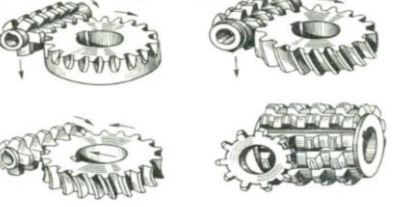
Gear Manufacturing Processes: From Design to Production
Gears are essential components used in various industries, from automotive and aerospace to machinery and robotics. The manufacturing of gears requires a precise and systematic approach to ensure optimal performance, durability, and reliability. In this blog post, we will explore the key steps involved in gear manufacturing processes, from design to production.
Gear Design:
The first step in gear manufacturing is the design phase. Gear designers utilize specialized software and tools to create the gear geometry, taking into account factors such as tooth profile, module, pressure angle, and pitch diameter. The design process also involves considering the specific application requirements, load capacity, and desired performance characteristics of the gear.
Material Selection:
Choosing the right material for gear production is crucial to ensure strength, wear resistance, and durability. Commonly used materials for gears include alloy steels, stainless steels, and non-ferrous metals like bronze and brass. The material selection is based on factors such as load capacity, operating conditions, and cost considerations.
Gear Cutting:
Gear cutting is a critical process in gear manufacturing. It involves removing material from a gear blank to create the desired tooth profile. There are several methods for gear cutting, including hobbing, shaping, milling, and broaching. Each method has its advantages and is chosen based on factors such as gear type, volume, and accuracy requirements.
Heat Treatment:
After gear cutting, the gears often undergo heat treatment processes to enhance their mechanical properties. Heat treatment techniques such as carburizing, quenching, and tempering are employed to achieve desired hardness, toughness, and wear resistance. Heat treatment ensures that the gears can withstand the stresses and loads they will encounter during operation.
Finishing Operations:
Once the gears have undergone heat treatment, they go through various finishing operations. These include grinding, honing, lapping, and deburring to achieve the desired surface finish, dimensional accuracy, and tooth profile quality. Finishing operations are essential for reducing noise, improving gear meshing, and ensuring smooth and efficient operation.
Inspection and Quality Control:
Throughout the manufacturing process, gears undergo rigorous inspection and quality control measures. This involves using precision measurement tools and equipment to check dimensional accuracy, tooth profile, surface finish, and hardness. Advanced inspection techniques such as coordinate measuring machines (CMMs) and non-destructive testing methods are employed to ensure the gears meet the required specifications and standards.
Assembly and Testing:
In some applications, gears are assembled into gearboxes or transmission systems. This involves carefully aligning the gears, shafts, and bearings to ensure proper gear meshing and smooth operation. Gear assemblies are then subjected to functional testing, including load testing, noise testing, and endurance testing, to verify their performance under real-world conditions.
Gear manufacturing is a complex and precise process that involves multiple steps, from gear design to production. Each step, from gear cutting and heat treatment to finishing operations and quality control, is crucial in ensuring the final gears meet the required specifications and performance standards. By following a systematic approach and employing advanced manufacturing techniques, gear manufacturers can produce high-quality gears that provide reliable and efficient performance in various applications.
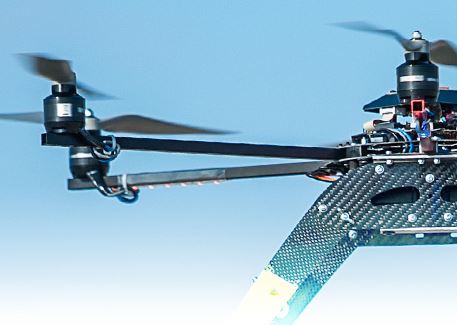
The Role of Gears in Unmanned Aerial Vehicles (UAVs)
Unmanned Aerial Vehicles (UAVs), commonly known as drones, have revolutionized various industries, including aerial photography, delivery services, surveillance, and agriculture. Within these UAVs, gears play a critical role in enabling efficient and precise flight control. Gears facilitate power transmission and motion control, ensuring smooth and reliable operation. In this blog post, we will explore the significance of gears in unmanned aerial vehicles.
1. Flight Control: Gears are essential components in the flight control systems of UAVs. They enable the transmission of power from the motors to the propellers, which generate the necessary thrust for flight. Gears ensure that the rotational motion produced by the motors is efficiently transferred to the propellers, resulting in precise control over the UAV’s movement, including ascent, descent, and directional changes.
2. Speed Control: Controlling speed is crucial in UAVs to achieve stable flight and maneuverability. Gears offer speed control capabilities by providing different gear ratios. By changing gears, UAV operators can adjust the rotational speed of the propellers, allowing for varying flight speeds based on specific requirements. Speed control through gears enables UAVs to optimize their performance for different tasks, such as aerial photography, search and rescue, or surveillance.
3. Torque Conversion: UAVs often require torque conversion to adapt to changing flight conditions or payload requirements. Gears facilitate torque conversion by adjusting the rotational force transmitted to the propellers. This allows UAVs to generate the necessary thrust to overcome external forces, such as wind resistance, or to carry heavier payloads. Proper torque conversion ensures efficient flight performance and stability in diverse operating conditions.
4. Durability and Efficiency: Gears used in UAVs are designed to be lightweight yet durable to maximize flight efficiency and endurance. They are constructed using high-quality materials, such as aluminum alloys or composites, to ensure strength and reliability while minimizing weight. The use of durable gears contributes to the overall longevity and operational efficiency of UAVs, enabling longer flight times and reducing maintenance requirements.
5. Noise Reduction: In addition to their functional role, gears also impact the acoustic performance of UAVs. Noise reduction is a critical consideration, especially in applications such as aerial photography or surveillance, where minimizing noise interference is essential. Carefully designed and properly lubricated gears can help reduce noise levels generated by the propulsion system, resulting in quieter operation and improved overall performance.
Gears are integral components in unmanned aerial vehicles (UAVs), enabling flight control, speed adjustment, torque conversion, durability, and noise reduction. Their presence ensures precise and efficient operation, allowing UAVs to perform various tasks with stability and reliability. As UAV technology continues to advance, gears will continue to play a vital role in enhancing flight performance, autonomy, and versatility, driving the future of unmanned aerial vehicles toward new possibilities in different industries.
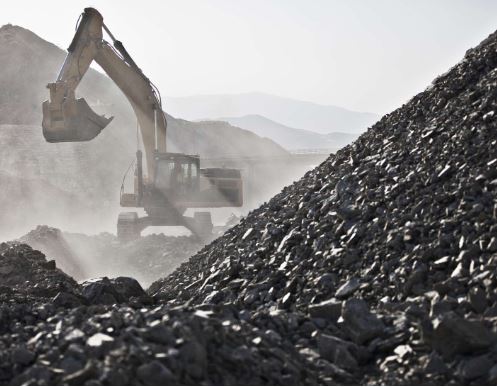
The Significance of Gears and Gearboxes in the Mining Industry
The mining industry plays a vital role in extracting valuable minerals and resources from the earth. Within this industry, gears and gearboxes are critical components used in mining machinery and equipment to enable efficient and powerful operations. Gears facilitate power transmission and motion control, while gearboxes provide speed adjustment and torque conversion. In this blog post, we will explore the importance of gears and gearboxes in the mining industry.
1. Power Transmission in Heavy Equipment: Mining operations require a wide range of heavy machinery, such as excavators, haul trucks, and crushers, to extract and transport minerals. Gears and gearboxes are integral in transmitting power from the engines to the various components of these machines. They ensure that the rotational motion produced by the engine is efficiently transferred to drive the movement and operation of the equipment, providing the necessary power for mining tasks.
2. Speed Control and Torque Conversion: Gears and gearboxes offer speed control and torque conversion capabilities in mining machinery. Different mining processes require varying speeds and torque levels to meet specific requirements. Gears and gearboxes allow operators to adjust the gear ratios to achieve the desired speed and torque output, enabling precise control over the equipment’s performance. This flexibility enhances the efficiency and effectiveness of mining operations, optimizing productivity and resource utilization.
3. Conveyor Systems: Conveyor systems are commonly used in mining operations to transport bulk materials over long distances. Gears and gearboxes play a crucial role in these systems, driving the movement of conveyor belts and facilitating efficient material handling. Gearboxes provide the necessary torque conversion and speed control to ensure the smooth and continuous operation of the conveyor system, enabling the seamless transfer of mined materials.
4. Hoisting and Lifting Equipment: Mining often involves the hoisting and lifting of heavy loads, such as ore, equipment, and personnel. Gears and gearboxes are essential components in hoisting and lifting equipment, including mine shaft hoists and cranes. They enable the precise control of lifting operations, ensuring safe and efficient movement of heavy loads in mining shafts or on the surface. Gearboxes offer the ability to adjust the lifting speed and control the load with accuracy and safety.
5. Durability and Reliability: Mining operations are characterized by harsh and demanding environments, including abrasive materials, dust, high loads, and extreme temperatures. Gears and gearboxes used in mining machinery are designed to withstand these challenging conditions. They are built with robust materials and precision engineering to ensure durability and reliability. Proper maintenance and lubrication of gears and gearboxes are crucial for their longevity, minimizing downtime and maximizing the productivity of mining operations.
Gears and gearboxes play a crucial role in the mining industry, enabling power transmission, speed control, and torque conversion in various mining machinery and equipment. From heavy equipment power transmission to the efficient operation of conveyor systems and hoisting equipment, gears and gearboxes contribute to the efficiency, productivity, and safety of mining operations. As the mining industry continues to evolve, advancements in gear and gearbox technology will further enhance productivity, sustainability, and worker safety, driving the future of mining towards more efficient and responsible practices.
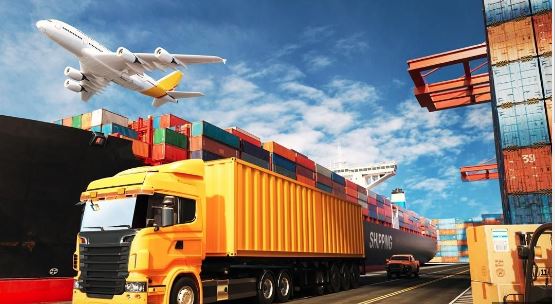
The Significance of Gears and Gearboxes in the Transportation Industry
The transportation industry plays a vital role in the global economy, connecting people and goods across various modes of transport. Within this industry, gears and gearboxes are essential components that enable the efficient and reliable operation of vehicles. Whether it’s cars, trucks, trains, or ships, gears and gearboxes are utilized to transmit power, control speed, and enhance overall performance. In this blog post, we will explore the importance of gears and gearboxes in the transportation industry.
1. Power Transmission: Gears and gearboxes are key elements in power transmission within vehicles. They are responsible for transferring power from the engine to the wheels or propellers, enabling movement and propulsion. By utilizing different gear ratios, gears and gearboxes allow vehicles to optimize power delivery based on specific requirements, such as acceleration, towing capacity, or fuel efficiency. Efficient power transmission ensures that vehicles can operate smoothly and effectively, regardless of the mode of transportation.
2. Speed Control: Controlling speed is crucial in transportation to ensure safety and efficiency. Gears and gearboxes enable speed control by offering various gear ratios. By changing gears, vehicles can achieve different speeds based on road conditions, terrain, or desired performance. Gearboxes provide the flexibility to adapt to different driving or operating conditions, allowing vehicles to operate efficiently across a wide range of speed requirements. This versatility is particularly important in applications such as heavy-duty trucks, where the ability to handle different load capacities and gradients is necessary.
3. Torque Conversion: Gears and gearboxes also facilitate torque conversion in transportation vehicles. Torque is the rotational force generated by the engine, and it needs to be appropriately converted to achieve the desired output. Through gear systems, gears and gearboxes can increase or decrease torque to match the vehicle’s requirements. This is particularly relevant in applications such as towing, where high torque is necessary to overcome resistance or inclines. Gearboxes allow vehicles to effectively convert engine torque into usable power, ensuring optimal performance and efficiency.
4. Durability and Load Handling: Transportation vehicles often operate under demanding conditions, such as carrying heavy loads or enduring challenging terrains. Gears and gearboxes play a crucial role in ensuring durability and load handling capabilities. They are designed to withstand high stress and distribute the load evenly across the drivetrain. By effectively distributing the forces exerted on the vehicle’s components, gears and gearboxes help minimize wear and tear, extend the lifespan of the vehicle, and enhance overall reliability.
5. Efficiency and Fuel Economy: In an era of increasing environmental awareness, efficiency and fuel economy are paramount in the transportation industry. Gears and gearboxes contribute significantly to achieving these goals. By optimizing power delivery and controlling speed, vehicles can operate at their most efficient RPM range. Gearboxes enable vehicles to maintain optimal engine speed and torque, resulting in improved fuel efficiency. Efficient power transmission through gears and gearboxes ensures that the vehicle’s engine operates in its sweet spot, maximizing performance while minimizing fuel consumption.
Gears and gearboxes play a crucial role in the transportation industry by enabling power transmission, speed control, torque conversion, durability, and fuel efficiency. Whether it’s cars, trucks, trains, or ships, these components are essential for reliable and efficient vehicle operation. As the transportation industry continues to evolve, the advancements in gear and gearbox technology will further enhance performance, sustainability, and safety, driving us towards a more connected and sustainable future.
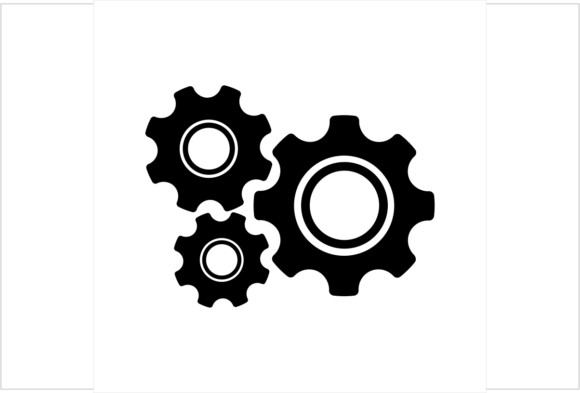
Types of Gear and Their Features
Types of Gear Types and Their Features
Here are 25 types of gears with brief descriptions of their features:
1.Spur Gears: Simplest and most common type of gear, with straight teeth that are parallel to the axis of rotation.
2.Helical Gears: Similar to spur gears, but with teeth that are angled or helical, which makes them quieter and smoother in operation.
3.Double Helical Gears: Also known as herringbone gears, they have two sets of teeth that are angled in opposite directions to cancel out axial forces.
4.Bevel Gears: Used to transmit power and motion between shafts that are at an angle to each other, with cone-shaped teeth.
5.Hypoid Gears: Similar to bevel gears, but with non-intersecting axes, which allows for a larger gear ratio.
6.Worm Gears: Consist of a worm gear and worm wheel, used for high reduction ratios and a right-angle drive.
7.Rack and Pinion Gears: Used to convert rotational motion into linear motion, with a linear rack and a circular pinion.
8.Spur Rack Gears: Straight-toothed gears that are linear in shape and used for linear motion.
9.Internal Gears: Similar to spur gears but with teeth on the inside, used for planetary gear systems.
10.Planetary Gears: Consist of a central sun gear, planet gears, and a ring gear, used for high torque and compact design.
11.Epicyclic Gears: Similar to planetary gears, but with more complex motion paths and greater flexibility in design.
12.Straight Bevel Gears: Similar to bevel gears, but with teeth that are straight rather than curved.
13.Spiral Bevel Gears: Similar to straight bevel gears, but with angled teeth for smoother operation and greater load capacity.
14.Zerol Bevel Gears: A type of spiral bevel gear with teeth that are curved in both the axial and radial directions.
15.Crown Gears: Used in differential systems, with cylindrical teeth that are perpendicular to the axis of rotation.
16.Face Gears: Similar to crown gears, but with teeth that are flat and perpendicular to the axis of rotation.
17.Skew Bevel Gears: A type of bevel gear with teeth that are angled in both the axial and radial directions.
18.Hypocycloid Gears: A type of planetary gear that has a smaller diameter than the sun gear.
19.Cycloid Gears: Similar to hypocycloid gears, but with a more complex shape and greater flexibility in design.
20.Spiroid Gears: A type of spiral bevel gear with a more complex tooth shape and greater load capacity.
21.Coniflex Gears: Similar to spiral bevel gears, but with a different tooth shape that allows for smoother operation and greater load capacity.
22.Involute Gears: A type of spur gear with teeth that have a specific profile shape for smoother operation.
23.Quick-Change Gears: Used in machine tools for quick and easy gear changes.
24.Variable Speed Gears: Used to vary the speed of a machine or device, with adjustable gear ratios.
25.Continuously Variable Transmissions (CVTs): Use a belt or chain that can vary in width to achieve an infinite number of gear ratios.
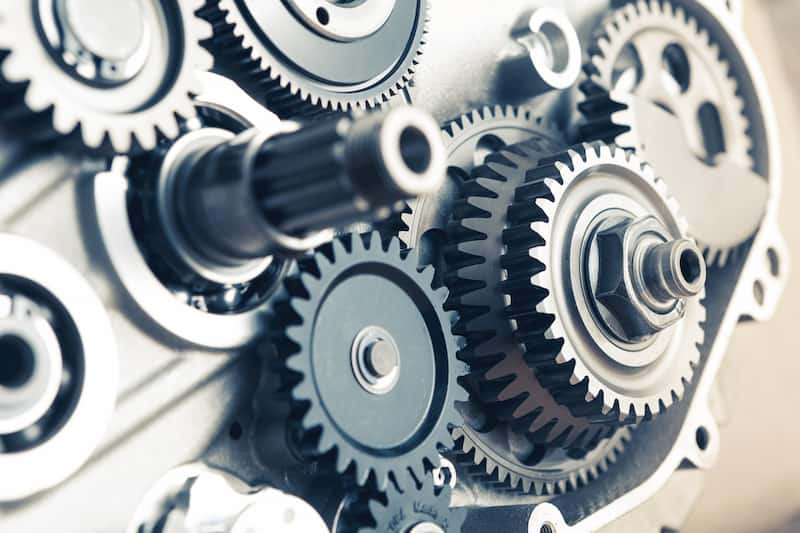
Gear
A gear is a rotating mechanical component with teeth or cogs that mesh with anothergear to transmit power and motion. They are used in a wide variety of machines anddevices to change the speed, torque, and direction of motion.
There are several types of gears, each with its own specific design and function. Here aresome of the most common types of gears:
1.Spur Gears: Spur gears are the simplest and most common type of gear. They have straight teeth that are arranged in a parallel fashion along the gear’s axis. They areused in a wide variety of applications, including cars, clocks, and industrial machinery.
2.Helical Gears: Helical gears are similar to spur gears but have angled teeth thatare arranged in a helix pattern along the gear’s axis. This design reduces noise andimproves smoothness in operation. Helical gears are commonly used in car transmissions and industrial machinery.
3.Bevel Gears: Bevel gears have cone-shaped teeth that allow them to transmit power and motion between two shafts that are at an angle to each other. They are usedin many applications, including power tools, vehicles, and industrial machinery.
4.Worm Gears: Worm gears consist of a worm or screw gear that meshes with a worm wheel. They are used to transmit motion at a right angle and are commonly foundin steering systems, elevators, and industrial machinery.
5.Rack and Pinion Gears: Rack and pinion gears consist of a straight bar (therack) with teeth that mesh with a small gear (the pinion). They are commonly used in steering systems and can convert rotational motion into linear motion.
6.Planetary Gears: Planetary gears consist of a sun gear, planet gears, and a ring gear. They are used in many applications, including car transmissions, industrialmachinery, and robotics.
Overall, gears are essential components in many machines and devices, and the type of gear used depends on the specific application and requirements of the machine or device.
